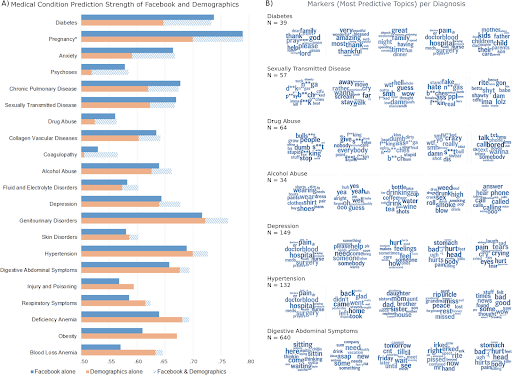COVID-19 has changed a lot in our lives—especially our approach to healthcare.
Due to the social distancing and restrictions put in place during the COVID-19 pandemic, there has been a digital transformation in UK healthcare as the industry moves towards telehealth and technology to support patient outcomes. Through digital transformations, the healthcare industry can leverage technology like cloud and mobile applications to enhance patient experience and enable data-driven decision-making.
But the move hasn’t been easy.
Making the transition to a digital healthcare infrastructure requires a change in technology, culture and attitudes. However, the shift can be enormously beneficial for both healthcare providers and patients. It’s easier to access records, clinical outcomes can be improved, and doctors can communicate with their patients more effectively.
In this piece, we’re going to break down:
- What is digital transformation in healthcare?
- What are the benefits of digital transformation in healthcare?
- The top healthcare digital transformation challenges
- Real-life examples of how digital transformation is changing healthcare
Ready?
What is digital transformation in healthcare?
Digital transformation in healthcare is when healthcare providers use technology to communicate with patients, improve clinical outcomes, and make records more accessible.
The rise in digitisation has been happening slowly over the last decade, but the COVID-19 pandemic has accelerated the shift towards increasing technology in healthcare sectors. 81% of healthcare executives say their organisation is accelerating their digital changes, while 93% say innovating their technology has now become urgent.
Once a digital transformation begins, the changes can be seen everywhere, from technologies the healthcare provider uses to equipment and digital services like telemedicine. It also means patients’ records have been digitalised, which has spurred a shift in how they securely access their own medical information.
Patients are enjoying the shift towards online, too. Studies show that:
- 47% of patients go online to research doctors
- 38% research medical facilities and hospitals
- 77% book their medical appointments digitally
The use of telehealth has also skyrocketed since the world went into lockdown—and most patients were happy with the service.
One study of over 4,300 patients found that the overall patient satisfaction score across all telehealth providers came in at 860 on a 1,000-point scale—one of the highest patient satisfaction scores for a healthcare study ever done by the surveyor.
What are the benefits of digital transformation in healthcare?
1. Better outcomes for patients
Not only is it easier for patients to communicate with their healthcare providers once they’ve gone through a digital transformation, but the improvements will also lead to better outcomes for them.
As technology in healthcare improves, patients and healthcare professionals can communicate using email, smartphones, and text messages. Instead of waiting for a letter about appointments or test results, patients will know their next steps quickly. This is beneficial for healthcare providers as well, as it’s more cost-effective and quick to communicate with patients digitally.
There are also more treatment options for patients, like accessing telemedicine so healthcare professionals can examine them, diagnose a problem, and provide a prescription—all from the comfort of their own home.
Technology also cuts out the room for human and clinical errors during treatment. For example, the NHS’ Scan4Safety campaign incorporated barcode scanners for healthcare professionals to use to identify what medicines and resources should be used during treatment.
Besides cutting down the risk of human error, it can also save nurses hours and stop wastage in budgets. A year after the program was introduced, the NHS is expected to save a whopping £1bn.
Tim Wells, a consultant cardiologist at Salisbury NHS Foundation Trust, said the scanning system had given his cardiology department the ability to trace implanted devices for the first time.
“Not only does this provide us with a level of data and insight that can be used to better challenge clinical practice and variation, helping us to reduce inefficiencies and improve patient experience and outcomes – more importantly it ultimately helps to safeguard our patients from avoidable harm.”
2. Easier access to patient records
One of the most beneficial areas of digital transformation in the healthcare industry is online access to patient records.
Going digital allows healthcare providers to access and update patient information from anywhere. This means that general practitioners can share information and leave notes for other practitioners, resulting in more effective and streamlined care for their patients.
It’s also transformed the way records and referrals are stored. Before digitisation, records were kept on paper in boxes or filing cabinets. Due to the uptake in electronic health records, they can be stored securely and accessed immediately if necessary.
3. More innovation thanks to data collection
Thanks to digital transformation, clinicians can collect and analyse large amounts of data in a short time.
This means when researchers or specialists need information about rare diseases, clinical trials, or studies, they can access it instantly. Having this amount of data at the fingertips of the healthcare industry spurs innovation in new treatment methods. It also allows them to combine data sets from various trials and outcomes to make better-informed decisions about treating patients.
The top healthcare digital transformation challenges
Digital transformation within healthcare organisations doesn’t happen overnight—it requires investment and cultural changes.
Migrating services over to a cloud environment, for example, has many challenges. Providers need to be reassured that their staff can adapt to the new technology, and patients need to know that their records and data will be handled securely.
When considering a digital transformation, it’s essential to ask yourself:
- Will patient data be handled by these applications and how sensitive is it?
- What security safeguards do we need to have in place?
- What applications will we use to store patient data?
- Will our current technology handle the requirements of a digital upgrade?
Once you know where you stand, it’s easier to plan for what technology you’ll need to make the switch. Other than resource limitations, there are some other challenges to think about when you’re planning a digital transformation:
- Local healthcare culture: For decades, patients have accessed healthcare in the same way, like phoning their GP to book appointments and waiting for letters about test results. It’s almost ingrained in their psyche. It’s up to you to prepare your patients once the digital transformation starts so they can readjust to a new way of accessing healthcare.
- Lack of expertise in digital systems: Switching to a cloud-based care system requires experts. It’s no easy task setting up, integrating, and deploying a digital healthcare system successfully. You’ll need a managed service provider to integrate your system with essential systems like Health and Social Care Network (HSCN), Electronic Prescriptions Service (EPS), and medical records.
Pro-tip: Want to learn more about what a trusted IT managed service provider can do for your healthcare organisation? Redcentric helps organisations like the NHS and private healthcare providers digitally transform their systems successfully. Click here to find out more.
Real-life examples of how digital transformation is changing healthcare
Using data can track (and predict) disease
Technology is becoming an increasingly useful tool for healthcare professionals to track, analyse, and predict disease using language and medical history.
For example, one study tracked 999 patients posting their symptoms on Facebook who gave consent for medical professionals to access and analyse their posts. Using a mix of technology, data, and medical expertise, the researchers analysed approximately 20 million words from the posts and predicted diseases like diabetes, hypertension, and even depression and anxiety.
This type of diagnostic technology has also been helpful to the industry while battling COVID-19. The University of Cambridge developed an app that patients can download and upload short recordings of their breathing or cough as well as complete a simple symptom check.
The app then predicts whether or not a person is suffering from COVID-19.
Transforming the way we access telehealth
If there is one aspect of healthcare the COVID-19 pandemic has ushered in more than any other, it’s the access and use of telehealth services.
The rise of telehealth allowed patients across the world in lockdown to still access GP services and seek advice virtually. This is only possible if both patients and providers have the necessary infrastructure to meet virtually, but early studies show that the popularity isn’t going to slow down post-pandemic.
With nearly 1.5 billion citizens to look after, countries like China plan to expand their telemedicine program so that it covers at least 70% of their population by 2022. When the United Kingdom went into lockdown in early 2020, telemedicine appointments skyrocketed from 25% to 71%, helping to usher in increased usage of the NHS’ other online platforms:
- NHS app registrations increased by 111% from February to March 2020
- Use of the NHS 111 online advice site was up 257% between June and November 2020
- Repeat prescription requests using the app increased by 97%, from 50,341 in February to 98,984 in March 2020
- The number of patient record views rose by 62% – from 276,400 in February to 448,477 in March
The data shows that people grew more comfortable using telehealth and telemedicine technology, a positive sign for providers moving to a digital landscape. Ben Davison, NHS Digital’s Executive Director for Product Development, says the pandemic has made it clear that digital technologies have now come to the fore.
“Good technology is making it possible for doctors, nurses and other health professionals to continue to deliver care remotely where possible and freeing up time for those patients who need face-to-face care,” he said.
“It’s keeping people well whilst they are isolated with good information and advice and the ability to manage things like prescriptions remotely.”
Time saving efficiencies with communication
Digital transformation has been helping healthcare providers, and in particular GP surgeries, to save time and create working efficiencies with their calls. By connecting securely their IP telephony solution to existing clinical systems, patient records can be automatically connected to within the clinical system during an inbound call based on a phone number match, allowing staff to quickly identify test results, notes on the record or priority tasks based on their record (e.g. requiring to book a flu jab). For inbound calls to GP surgeries digital transformations like these have been saving some surgeries up to 60 hours a month through speeding up interactions and efficiencies between the two systems.
Are you ready to digitally transform your healthcare system?
It’s clear that not only is the way patients approach their healthcare is changing, but so is the system itself.
Because of COVID-19, the world had no choice but to turn to virtual ways to access healthcare—and the outcomes for both patients and providers has been overwhelmingly positive.
With patients becoming more comfortable with accessing their records online, ordering prescriptions through apps, and having appointments with their GPs virtually—is now the right time for you to digitally transform your healthcare system?
If you would like to discuss your healthcare’s digital transformation then get in touch with the Redcentric team today to see how we can support you.






